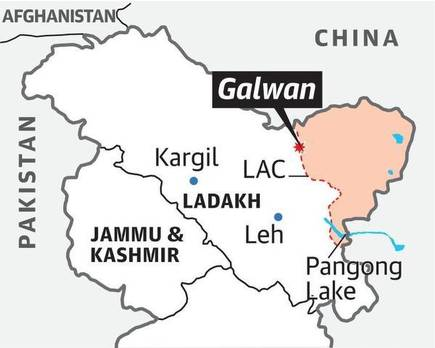International Relations
Decoupling India’s Manufacturing With China
This article is based on “Easier said” which was published in the Indian Express on 19/06/2020. It talks about the issues of banning Chinese imports by India in the wake of border clashes.
In the aftermath of the confrontation between India and China in the Galwan Valley, there has been a growing clamour for a boycott of Chinese products in India.
In this pursuit of using trade as a blunt instrument of retaliation against China, the government of India is actively considering nudging private players to reduce their dependence on China-made equipment.
However, given India’s dependence on Chinese manufacturing, any trade war or a boycott of Chinese goods may have a more adverse impact on India rather than China.
Need For Revisiting India’s Trade Policy vis-a-vis China
- Huge Trade Deficit: India’s imports from China in 2019-2020 reached $65 billion, out of $81 billion two-way trade.
- Leveraging India’s Raw Material: Along with importing a lot of finished products from China, India exports several kinds of raw materials and intermediate products.
- By saving these raw materials India can expand its manufacturing base more.
- De-industrialisation: Dumping of cheap goods by China into India, has rendered much of domestic manufacturing industries uncompetitive and thereby led to virtual deindustrialisation in many sectors.
- Relocation of Global Supply Chain: Amid Covid-19 pandemic, many multinational companies seek to move their businesses out of china. India should leverage this opportunity and attract these global supply chains.
Dependence of India on Chinese Manufacturing
- Made in China often helps Make in India: India is dependent on China regarding capital goods.
- This includes a wide variety of machinery, including electrical machinery, semiconductor driven machinery sector, etc.
- Thus, the ban on Chinese imports will affect the competitiveness of domestic manufacturing, and thus further erode the country’s export competitiveness.
- Minuscule Impact on China: India accounts for a minuscule share of China’s export market, it will have a limited impact on China.
- If India and China stop trading then, China would lose only 3% of its exports and less than 1% of its imports, while India will lose 5% of its exports and 14% of its imports.
- Impact on Indian Consumers: Any attempt to reduce imports from China, operationalised through tariffs or other non-tariff barriers, will raise prices for Indian consumers.
- The poorest consumers will be the worst-hit in a trade ban of this kind because they are the most price-sensitive.
- Also, without any alternative in the short-term, it is costly to replace Chinese products with much costlier imports from Japan and Germany.
- This will further increase India’s total trade deficit.
- China’s Investment In Indian Startups: There is also the issue of Chinese investment in the Indian start-up space to contend with.
- Companies like Alibaba and Tencent have invested in Indian unicorns such as Zomato, Paytm, Byju’s, Ola cabs and others.
- Centrality of China In Global Markets: It’s important to note along with being an exporter of assembled final products, China has also over the years become a major consumer for final products.
- Due to this, the shifting of supply chains out of China is not very lucrative for many Multinational companies.
- Also, blocking trade with China, India will miss out on one of the biggest markets.
Steps To Be Taken
- Boost Domestic Manufacturing: India’s strategy should be to boost manufacturing competitiveness and increase its share in world trade.
- In this pursuit, there is a need to create an infrastructure that raises the competitiveness of India’s exports.
- Removing Structural Bottlenecks: There is a need to push through long-pending legislation that aims to address the structural bottlenecks (in 4Ls: Land, Labour, Law, Liquidity) that continue to plague and hinder domestic competitiveness.
- Leveraging Service Sector: In spite of banning Chinese imports, India should tackle trade by trade.
- India can lobby for a more liberalised service sector (India’s comparative advantage) in China.
- Responding to China Strategically: In spite of drawing border disputes into a trade dispute, India should reply to China strategically in such matters of strategic importance.
- Thus, in this context, India must increase its engagement in the South China Sea, which is a key strategic issue for China.
Conclusion
Given India’s dependence on Chinese manufacturing, there is a need to understand that turning a border dispute into a trade war is unlikely to solve the border dispute and this trade war may hurt India far more than China.
|
Drishti mains Question India’s trade policy response to border clashes with China, should flow from a careful cost-benefit analysis, not be driven by knee-jerk reactions. Discuss. |





